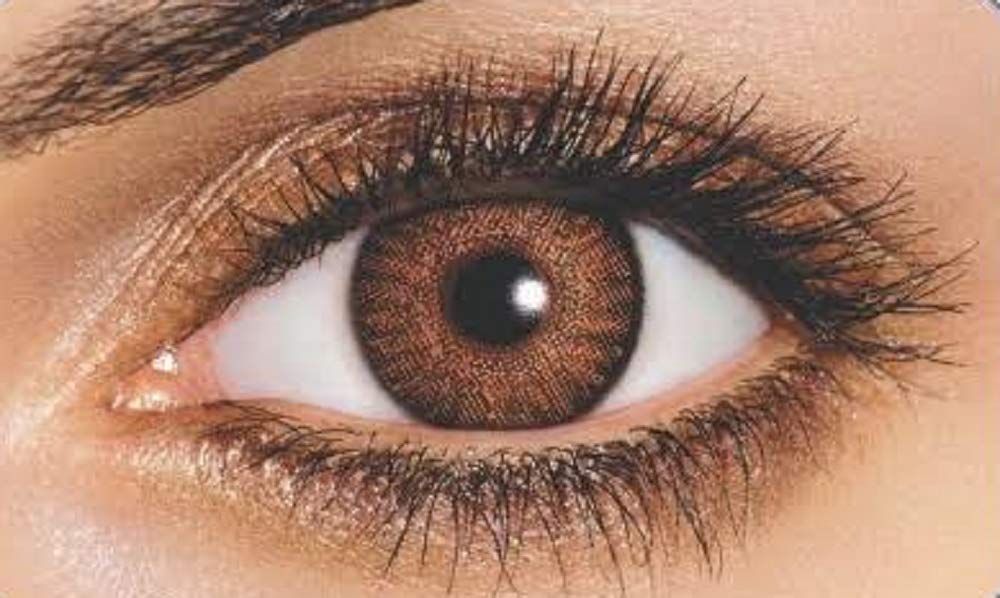Colored contact lenses are available in many colors and they enhance your day to day look. You can have them on during other special occasions too like Halloween. With these lenses, change the color of your eyes and adopt a look that is bold, subtle, or anywhere in between. You can find several colored contacts with or without lens power; they rectify farsightedness, nearsightedness, or astigmatism. Irrespective of whether you need colored contact lenses to change your eye color or for vision correction, you must have a contact lens prescription from a qualified eye doctor to wear them.
Notably, colored contact lenses are more costly than regular contacts; nevertheless, for many who are interested, the ability to change eye color is worth the price.
There are numerous types of color contacts most of them have features that mimic the natural appearance of the iris, the colored part of the eye. Since this particular area consists of colorful lines and shapes, some color contacts have a series of tiny colored dots and colored shapes and lines that are radially arranged to make the lenses appear more natural on the eye.
The middle part of the lens, which is the part situated above your pupil, is transparent so that you can see. There are three kinds of tints available for color contacts, namely the visibility tint, the opaque tint, and the enhancement tint.
The visibility tint has typically a green or a light blue tint added to the lens which can help you to see better during removal or insertion or in case you drop it. These lenses are somewhat faint and do not affect the eye color. The enhancement tint is a solid but see-through tint that is a little bit darker than a visibility tint. Just like the name denotes, an enhancement tint has the purpose of enhancing the natural color of your eyes.
Colored contacts that feature this type of tint are most fitting for those with light-colored eyes, and they want to make their eye color more intense. The third type of lens is the opaque tint; this tint is non-transparent, and it can completely change the color of your eye. The color contacts with opaque shades are available in a series of colors like blue, amethyst, hazel, violet, gray, green, and brown. Theatrical or costume contact lenses are also placed in this classification of opaque color tints. Being used mostly in movies, the special-effect contacts lenses are currently widely accessible by anyone.
How to choose the right color contact lenses
The most appropriate contact lens color ideal for you will depend on several factors like your hair color and the skin tone. Eventually, the best design and color to choose from depends on the look you want to get; it may be a daring and dramatic look or a natural-looking and subtle look.
If you have light eyes and you want to change your look for a more subtle one, your best choice will be an enhancement tint which defines the edges of your iris and which deepens your natural color. Besides, you can try out different eye colors while still looking natural; for instance, if you have naturally blue eyes, it is better if you were to choose green or grey contact lenses. For a new dramatic look that will turn heads almost immediately, go for warm-toned contact lens like light brown that is if you have natural light-colored eyes plus a cool complexion that has blue-red undertones.
For dark eyes, the best choice is colored contact lenses with colored tints. For a change that is natural-looking, try out hazel colored lenses or lighter honey brown. If you want to be different from the rest, choose contact lenses available in vivid colors like green, blue, and violet. If you have darker skin, bright-colored lenses can form a dramatic look.
Custom-tinted contact lenses provide a fully individualized look. Some of the manufacturers of these contact lens specialize in developing custom color tints suitable for prescription and non-prescription contact lenses. Any custom-made tint is usually fabricated with different colors in varying densities. Personalized color lenses are semi-translucent, giving-out a natural look. They can even cover up an eye injury or a congenital eye defect mimicking the appearance of a healthy pupil.
Today, custom-tinted contacts are not limited to cosmetic reasons. They are becoming increasingly popular in the athletic field since professional athletes use color tints to increase their visual performance. Some of the benefits of these specific tints are enhanced contrast sensitivity, reduced glare, and improved ability of depth perception.












